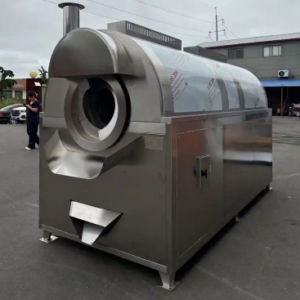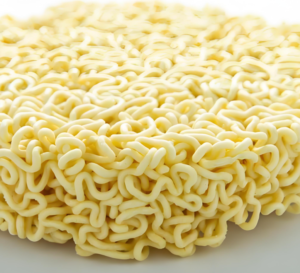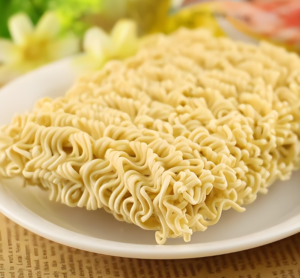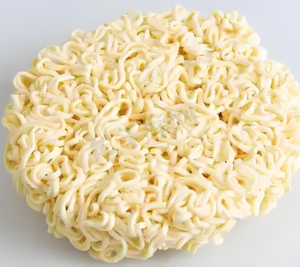Macaroni Production Process: A Complete Guide to Manufacturing Technology
1. Introduction to Macaroni Manufacturing
Macaroni is a traditional durum wheat pasta characterized by its curved tubular shape. As one of the most globally recognized pasta varieties, modern macaroni production combines centuries-old techniques with advanced food engineering. This article details the complete manufacturing process from raw material selection to final packaging.
macaroni making machine
Toggle2. Raw Material Selection & Preparation
2.1 Primary Ingredients
- Durum wheat semolina (minimum 12% protein content)
- Water (potable, 28-32°C temperature controlled)
- Optional ingredients:
- Eggs (for enriched varieties)
- Vegetable powders (spinach, tomato)
- Vitamin/mineral premixes
2.2 Quality Control Measures
- Semolina testing:
- Yellow index (>24 b* value)
- Gluten quality (W value 180-220)
- Granulation (250-350μm particle size)
- Water analysis:
- Hardness (4-8°dH optimal)
- pH (6.5-7.5 range)
3. Dough Mixing & Kneading
3.1 Industrial Mixing Process
- Continuous mixers (capacity 2,000-5,000 kg/hr)
- Key parameters:
- Mixing time: 8-12 minutes
- Dough temperature: 40±2°C
- Moisture content: 31±1%
- Vacuum mixing (0.6-0.8 bar) reduces air inclusion
3.2 Dough Rheology Control
- Farinograph monitoring:
- Water absorption: 62-66%
- Stability time: >8 minutes
- Mixing tolerance index: <30 BU
4. Extrusion & Shaping Technology
4.1 Macaroni-Specific Extrusion
- Twin-screw extruders with:
- L/D ratio 8:1 to 12:1
- Screw speed 25-35 rpm
- Pressure 80-100 bar
- Bronze vs Teflon dies:
- Bronze creates rough surface (better sauce adhesion)
- Teflon produces smooth finish (higher output)
4.2 Unique Macaroni Forming Process
- Dough forced through die with central pin
- Curvature created by:
- Differential air flow
- Guided deflection plates
- Cutting mechanism:
- Rotary blades (300-400 cuts/minute)
- Length control (25-35mm standard)
5. Pre-Drying & Stabilization
5.1 Moisture Equalization
- Pre-drying tunnels (15-20 minutes)
- Temperature gradient:
- Zone 1: 50°C (surface setting)
- Zone 2: 65°C (moisture migration)
- Humidity control (65-75% RH)
5.2 Protein Network Formation
- Critical moisture reduction:
- From 31% to 22-24%
- Gluten matrix stabilization
- Prevention of checking cracks
6. Primary Drying Phase
6.1 Multi-Zone Drying Technology
Modern pasta dryers feature 3-6 temperature zones:
| Zone | Temperature | RH% | Time | Function |
|---|---|---|---|---|
| 1 | 60-65°C | 75% | 45min | Case hardening |
| 2 | 70-75°C | 65% | 90min | Moisture migration |
| 3 | 80-85°C | 55% | 120min | Core drying |
| 4 | 60-65°C | 60% | 60min | Stabilization |
6.2 Advanced Drying Systems
- Microwave-assisted drying (reduces time by 30%)
- Heat pump technology (energy savings up to 40%)
- AI-controlled humidity adjustment
7. Final Drying & Conditioning
7.1 Moisture Equalization
- Slow reduction to 12.5% moisture
- Temperature: 50-55°C
- Time: 4-6 hours
7.2 Product Stabilization
- Cooling to ambient temperature
- Moisture homogenization
- Stress relief to prevent cracking
8. Quality Control & Testing
8.1 Physical Characteristics
- Color measurement (Minolta Lab* values)
- Cooking quality:
- Optimal time (8-10 minutes)
- Weight increase (2.1-2.3x)
- Cooking loss (<6%)
- Texture analysis:
- Firmness (>800g force)
- Elasticity (60-70% recovery)
8.2 Microbiological Standards
- Total plate count: <10,000 CFU/g
- Coliforms: <100 CFU/g
- Salmonella: Absent in 25g
9. Packaging Technology
9.1 Modern Packaging Solutions
- Gas flushing (N₂/CO₂ mix)
- Oxygen scavengers
- High-barrier films (EVOH layers)
9.2 Packaging Formats
- Retail boxes (250-500g)
- Bulk packs (5-25kg)
- Portion-controlled sachets
10. Special Variant Production
10.1 Whole Wheat Macaroni
- 100% whole durum flour
- Modified extrusion parameters
- Increased drying times
10.2 Gluten-Free Options
- Rice/corn flour blends
- Hydrocolloid addition (guar gum, xanthan)
- Special die designs
11. Industry Trends & Innovations
11.1 Process Improvements
- AI-driven process optimization
- Blockchain traceability
- Energy recovery systems
11.2 Product Development
- High-protein formulations
- Prebiotic fiber enrichment
- Sustainable packaging
12. Conclusion
Modern macaroni manufacturing combines precise ingredient control with advanced extrusion and drying technologies to produce consistent, high-quality pasta products. The unique curved shape requires specialized forming techniques while maintaining:
- Optimal cooking quality
- Extended shelf stability
- Superior mouthfeel characteristics
- Excellent nutritional retention
As consumer demands evolve, the industry continues innovating with sustainable practices, clean-label formulations, and smart manufacturing technologies while preserving the traditional qualities that make macaroni a globally beloved food product.








